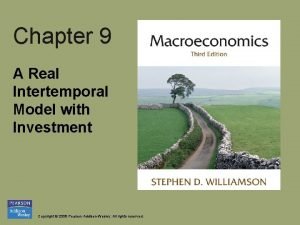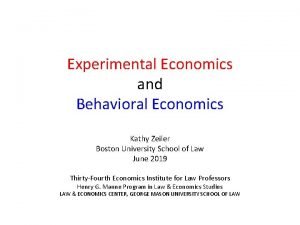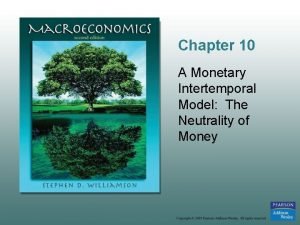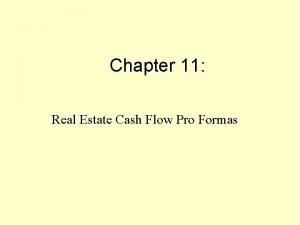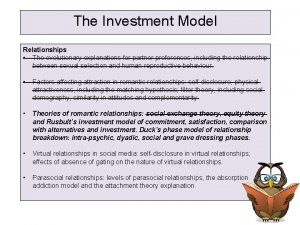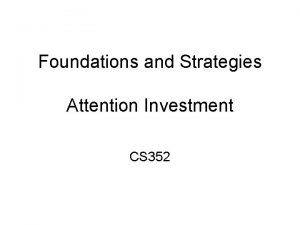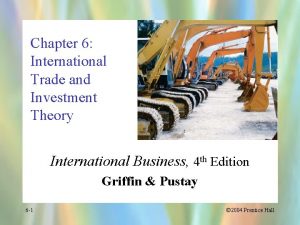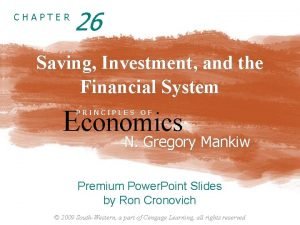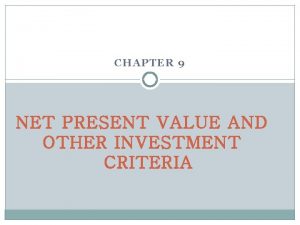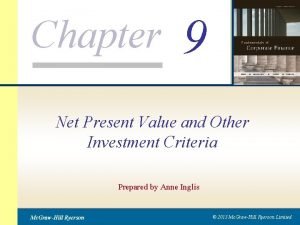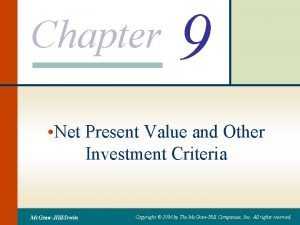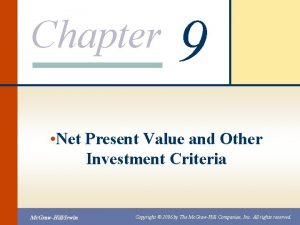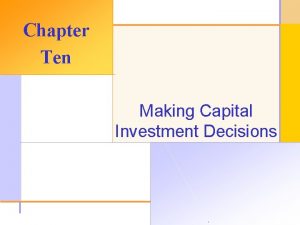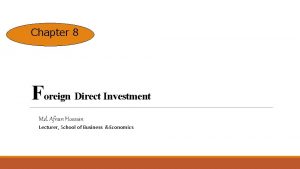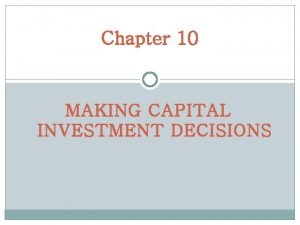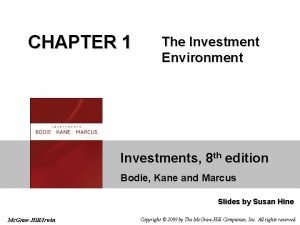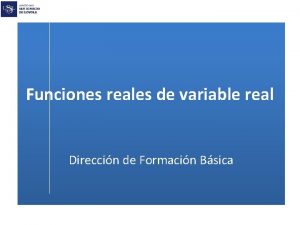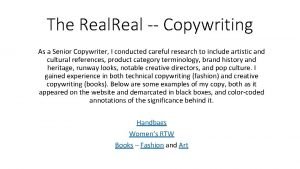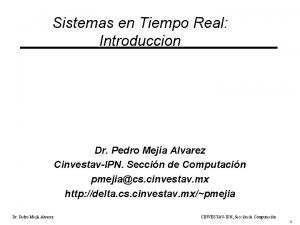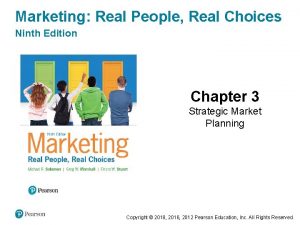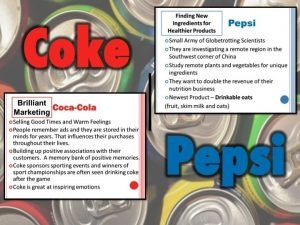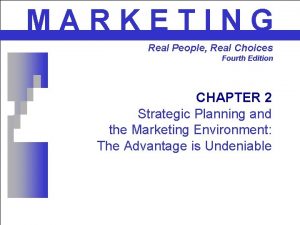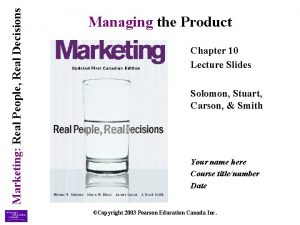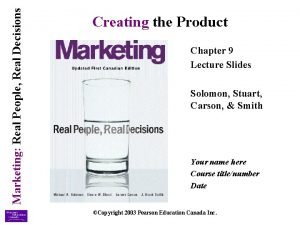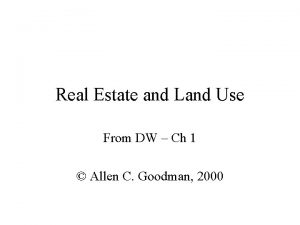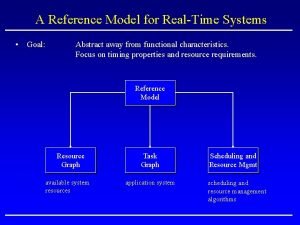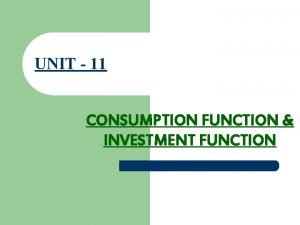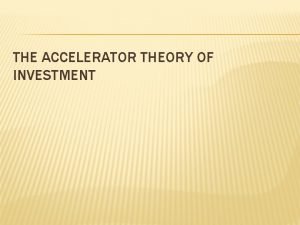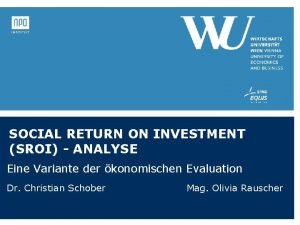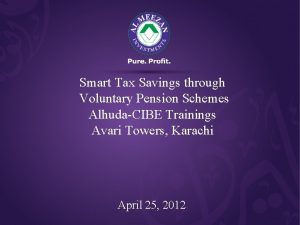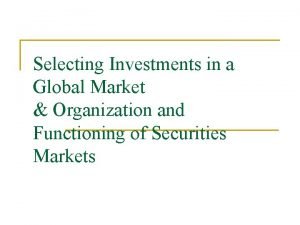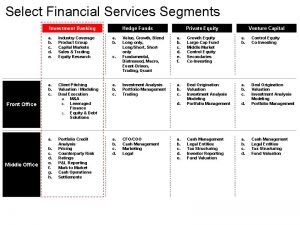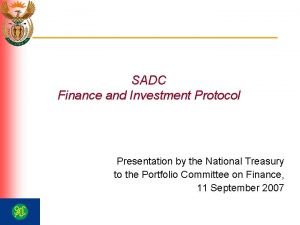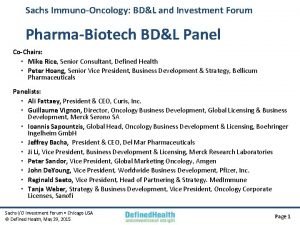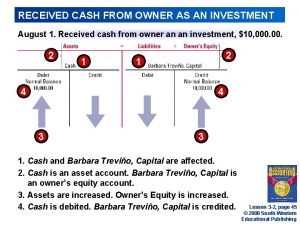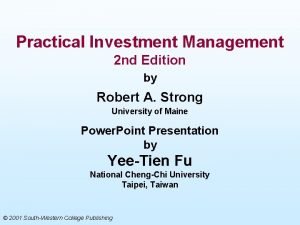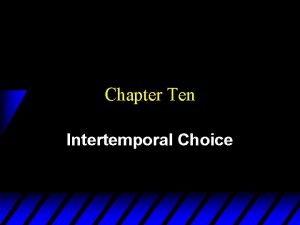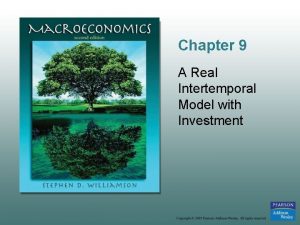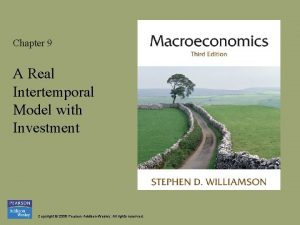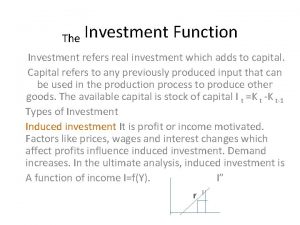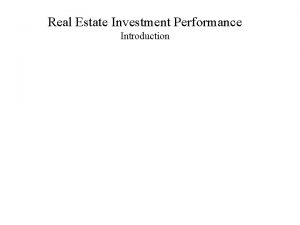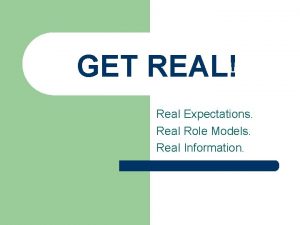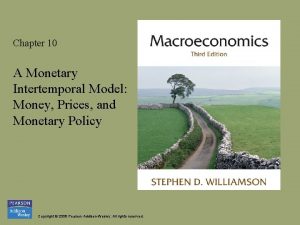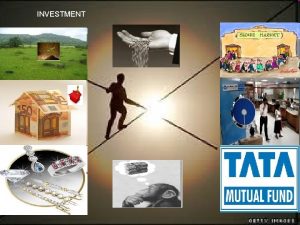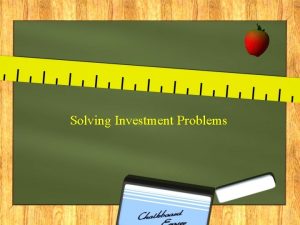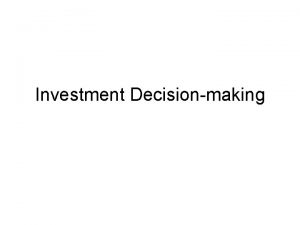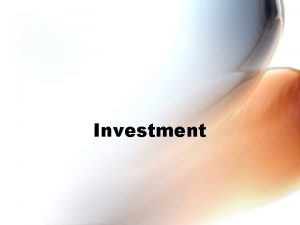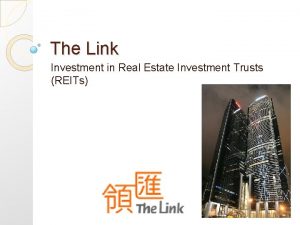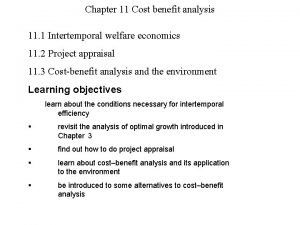Chapter 9 A Real Intertemporal Model with Investment

























































- Slides: 57

Chapter 9 A Real Intertemporal Model with Investment Copyright © 2008 Pearson Addison-Wesley. All rights reserved.

Chapter 9 Topics • Construct a real intertemporal model that will serve as a basis for studying money and business cycles in Chapters 10 -12. • Understand the investment decision of the firm. • Show macroeconomic shocks affect the economy. • Focus on the implications of future expectations for current macroeconomic performance, and the difference between temporary and permanent shocks. Copyright © 2008 Pearson Addison-Wesley. All rights reserved. 9 -2

Real Intertemporal Model • Current and future periods. • Representative Consumer – consumption/savings decision • Representative Firm – hires labor and invests in current period, hires labor in future • Government – spends and taxes in present and future, and borrows on the credit market. Copyright © 2008 Pearson Addison-Wesley. All rights reserved. 9 -3

Model - Consumer • • • Time endowment in each period , h. Real wage in current and future period, (w, w’). Lump-sum taxes (T, T’) Dividend incomes (∏, ∏’). Price takers: w, w’ and r are taken as given. Two decisions: – Saving in current period. – (C, l) in current period and (C’, l’) in future period. Copyright © 2008 Pearson Addison-Wesley. All rights reserved. 9 -4

Equation 9. 1 Consumer’s current-period budget constraint: Copyright © 2008 Pearson Addison-Wesley. All rights reserved. 9 -5

Equation 9. 2 Consumer’s future-period budget constraint: Copyright © 2008 Pearson Addison-Wesley. All rights reserved. 9 -6

Equation 9. 3 Consumer’s lifetime budget constraint: Copyright © 2008 Pearson Addison-Wesley. All rights reserved. 9 -7

Equation 9. 4 Consumer’s current-period marginal condition: Marginal condition for work-leisure decision from Ch. 4. Copyright © 2008 Pearson Addison-Wesley. All rights reserved. 9 -8

Equation 9. 5 Consumer’s future-period marginal condition: Copyright © 2008 Pearson Addison-Wesley. All rights reserved. 9 -9

Equation 9. 6 Consumer’s intertemporal marginal condition: Marginal Condition for consumption-saving decision in Ch. 8. Copyright © 2008 Pearson Addison-Wesley. All rights reserved. 9 -10

Tradeoff of Intertemporal Leisure Decision • MRS l , l’ = w ( 1 + r ) / w’ Copyright © 2008 Pearson Addison-Wesley. All rights reserved. 9 -11

Consumer’s Current Labor Supply Behavior • Current labor supplied increases with the real wage (substitution effects are assumed to dominate income effects). • Labor supply increases with an increase in the real interest rate, through an intertemporal substitution effect. • An increase in lifetime wealth (e. g. taxes fall) reduces labor supply. Copyright © 2008 Pearson Addison-Wesley. All rights reserved. 9 -12

Figure 9. 1 The Representative Consumer’s Current Labor Supply Curve Copyright © 2008 Pearson Addison-Wesley. All rights reserved. 9 -13

Figure 9. 2 An Increase in the Real Interest Rate Shifts the Current Labor Supply Curve to the Right Copyright © 2008 Pearson Addison-Wesley. All rights reserved. 9 -14

Figure 9. 3 Effects of an Increase in Lifetime Wealth Copyright © 2008 Pearson Addison-Wesley. All rights reserved. 9 -15

Equation 9. 7 Firm’s current-period production function: N is choice variable in current period. That is, firms choose N to maximize current profits. K is stock of capital in current period and firms take it as given. Copyright © 2008 Pearson Addison-Wesley. All rights reserved. 9 -16

Investment • Def: goods and service that are produced in current period, yet not consumed. • Investment in current period. – One unit of consumption good can be transformed into one unit of investment good. • Since I uses some of c, c drops. Since I enhances future period’s productive capacity (recall that MPK >0), c’ increases. – I represents tradeoff between c and c’ (or between ∏, ∏’). Copyright © 2008 Pearson Addison-Wesley. All rights reserved. 9 -17

Equation 9. 9 Evolution of the firm’s capital stock: Copyright © 2008 Pearson Addison-Wesley. All rights reserved. 9 -18

Equation 9. 8 K’ = (1 – d) K + I. I is investment made in current period, and d is depreciation rate. Copyright © 2008 Pearson Addison-Wesley. All rights reserved. 9 -19

Equation 9. 10 Firm’s current-period profits: I: capture the foregone profits in current period since investing in I units of capital requires I units of consumption goods in current period. The profit drops by I. Copyright © 2008 Pearson Addison-Wesley. All rights reserved. 9 -20

Equation 9. 11 Firm’s future-period profits: (1 – d) K’ : at the end of future period, capital can be liquidated in market. Copyright © 2008 Pearson Addison-Wesley. All rights reserved. 9 -21

Equation 9. 12 The firm maximizes the present value of profits, Firms profit maximizing problem: given w, w’ and r, maximizing PV of profits by choosing N, N’, and I. Copyright © 2008 Pearson Addison-Wesley. All rights reserved. 9 -22

The Firm’s Labor Demand As in Chapter 4, the firm’s labor demand schedule is the marginal product of labor for the firm, which is downward sloping. MPN = w. That is, the marginal product of N equals real wage. Copyright © 2008 Pearson Addison-Wesley. All rights reserved. 9 -23

Figure 9. 4 The Demand Curve for Current Labor Is the Representative Firm’s Marginal Product of Labor Schedule Copyright © 2008 Pearson Addison-Wesley. All rights reserved. 9 -24

Figure 9. 5 The Current Demand Curve for Labor Shifts Due to Changes in Current Total Factor Productivity z and in the Current Capital Stock K Copyright © 2008 Pearson Addison-Wesley. All rights reserved. 9 -25

The Representative Firm’s Investment Decision • The firm invests to the point where the marginal benefit from investment equals the marginal cost (MB=MC). • This decision process is similar to the optimal demand for labor in current period. Copyright © 2008 Pearson Addison-Wesley. All rights reserved. 9 -26

Equation 9. 13 The marginal cost of investment is 1, as the firm gives up one unit of current profits for each unit it invests, so: Copyright © 2008 Pearson Addison-Wesley. All rights reserved. 9 -27

Equation 9. 14 The marginal benefit of investment is the marginal product of future capital plus the quantity of capital that will be left in the future after depreciation, all discounted back to the present: Copyright © 2008 Pearson Addison-Wesley. All rights reserved. 9 -28

Equation 9. 15 The firm’s optimal investment rule, obtained by equating the marginal benefit and marginal cost of investment: Copyright © 2008 Pearson Addison-Wesley. All rights reserved. 9 -29

Equation 9. 16 Simplified optimal investment rule: Investing in K until the net marginal product of K equals real interest rate. Intuition: opportunity cost of investing in K is real interest rate, the rate of return on other forms of assets, such as bond, in economy. If firms do not invest, but trade output for bond. Then 1 unit of output in current period gives firms (1 + r) units of future period goods. Copyright © 2008 Pearson Addison-Wesley. All rights reserved. 9 -30

Figure 9. 6 Optimal Investment Schedule for the Representative Firm Copyright © 2008 Pearson Addison-Wesley. All rights reserved. 9 -31

Figure 9. 7 The Optimal Investment Schedule Shifts to the Right if Current Capital Decreases or Future Total Factor Productivity Is Expected to Increase Copyright © 2008 Pearson Addison-Wesley. All rights reserved. 9 -32

Equation 9. 18 The government’s present-value budget constraint: Copyright © 2008 Pearson Addison-Wesley. All rights reserved. 9 -33

Derive Competitive Equilibrium • • Labor market: supply = demand. Derive the relation between Ys and r. Derive the relation between Yd and r. Good market: supply = demand. Copyright © 2008 Pearson Addison-Wesley. All rights reserved. 9 -34

Figure 9. 10 Determination of Equilibrium in the Labor Market Given the Real Interest Rate r Ns is upward-sloping under the assumption that sub. effect dominates income effect. Position of Ns is affected by r and we. Given r, equilibrium N is determined by Nd and Ns. Given z and K, the equilibrium N determines equilibrium value of Y. Copyright © 2008 Pearson Addison-Wesley. All rights reserved. 9 -35

Figure 9. 11 Construction of the Output Supply Curve Ys: output net of current period I. At each point on Ys, the labor market is in equilibrium. That is, for a given r, LM is in equilibrium when firms produce Y. Copyright © 2008 Pearson Addison-Wesley. All rights reserved. 9 -36

Figure 9. 12 An Increase in Current or Future Government Spending Shifts the Ys Curve Copyright © 2008 Pearson Addison-Wesley. All rights reserved. 9 -37

Figure 9. 13 An Increase in Current Total Factor Productivity Shifts the Ys Curve Copyright © 2008 Pearson Addison-Wesley. All rights reserved. 9 -38

Equation 9. 19 Total demand for output equals demand for consumption goods plus demand for investment goods, plus demand for goods from government: So Id and G are both independent of Yd. Cd and Id are both negatively related to r. As a result, when r increases, Yd decreases. Copyright © 2008 Pearson Addison-Wesley. All rights reserved. 9 -39

Figure 9. 14 The Output Demand Curve Copyright © 2008 Pearson Addison-Wesley. All rights reserved. 9 -40

Figure 9. 15 A Shift in the Output Demand Curve Copyright © 2008 Pearson Addison-Wesley. All rights reserved. 9 -41

Figure 9. 16 The Complete Real Intertemporal Model Copyright © 2008 Pearson Addison-Wesley. All rights reserved. 9 -42

Define of Competitive Equilibrium • • CE is a set of endogenous quantities (c*, I*, Nd*, Ns*, Y*) and endogenous prices, such as w and r, such that Given (w*, r*, y*), (c*, l* or Ns*) solves consumers’ utility max problem in current period. Given (w*, r*), (Nd*, I*) solves firms’ profit max problem in current period. Labor market clears where Ns = Nd=N*, and the real wage w* in current period is determined by intersection of Nd and Ns (r). Good market clears where Ys = Yd=Y*, and the real interest rate r* is determined by intersection of Yd and Ys. Copyright © 2008 Pearson Addison-Wesley. All rights reserved. 9 -43

Experiments Using the Real Intertemporal Model • • • G increases temporarily. G increases permanently. K decreases. z increases. z’ increases. Copyright © 2008 Pearson Addison-Wesley. All rights reserved. 9 -44

Temporary Increase in Government Purchases • Output increases, real interest rate increases, real wage falls, consumption and investment decrease, employment rises. • Government spending crowds out both consumption and investment. Copyright © 2008 Pearson Addison-Wesley. All rights reserved. 9 -45

Figure 9. 17 A Temporary Increase in Government Purchases Copyright © 2008 Pearson Addison-Wesley. All rights reserved. 9 -46

Permanent Increase in Government Purchases • Output increases by the amount of the increase in government spending. • No change in the real interest rate, investment and consumption unchanged, real wage falls, employment rises. • No crowding out of C and I, but leisure falls for the consumer. Copyright © 2008 Pearson Addison-Wesley. All rights reserved. 9 -47

Figure 9. 18 A Permanent Increase in Government Expenditures Copyright © 2008 Pearson Addison-Wesley. All rights reserved. 9 -48

A Decrease in the Current Capital Stock • This could arise due to a war or natural disaster. • Output may rise or fall, depending on how large the output demand effect is relative to the output supply effect. • The real interest rate rises, the real wage falls, employment may rise or fall. Copyright © 2008 Pearson Addison-Wesley. All rights reserved. 9 -49

Figure 9. 20 The Equilibrium Effects of a Decrease in the Current Capital Stock Copyright © 2008 Pearson Addison-Wesley. All rights reserved. 9 -50

Current Total Factor Productivity Increases • Real interest rate falls, consumption and investment rise, employment rises, real wage rises. • Productivity shocks are a potential explanation for business cycles – see Chapter 11. Copyright © 2008 Pearson Addison-Wesley. All rights reserved. 9 -51

Figure 9. 21 The Equilibrium Effects of an Increase in Current Total Factor Productivity Copyright © 2008 Pearson Addison-Wesley. All rights reserved. 9 -52

Total Factor Productivity Expected to Increase in Future • Output demand curve shifts right. • Real interest rate rises, investment increases, consumption may rise or fall, employment rises, real wage falls, output rises. • Important in explaining investment boom in the 1990 s. Copyright © 2008 Pearson Addison-Wesley. All rights reserved. 9 -53

Figure 9. 22 The Equilibrium Effects of an Increase in Future Total Factor Productivity Copyright © 2008 Pearson Addison-Wesley. All rights reserved. 9 -54

Figure 9. 23 Percentage Deviations From Trend in GDP and Investment, 1990– 2006 Copyright © 2008 Pearson Addison-Wesley. All rights reserved. 9 -55

Figure 9. 24 Investment as a Percentage of GDP, 1990– 2006 Copyright © 2008 Pearson Addison-Wesley. All rights reserved. 9 -56

Figure 9. 25 S and P 500 Stock Price Index, 1990– 2005 Copyright © 2008 Pearson Addison-Wesley. All rights reserved. 9 -57
 Real intertemporal model
Real intertemporal model Intertemporal choice model
Intertemporal choice model Money neutrality
Money neutrality Intertemporal budget constraint
Intertemporal budget constraint Intertemporal budget constraint
Intertemporal budget constraint Intertemporal production possibility frontier
Intertemporal production possibility frontier Fixed investment and inventory investment
Fixed investment and inventory investment Denver real estate investment associations
Denver real estate investment associations Pro forma real estate
Pro forma real estate Real investment arad
Real investment arad Tempo structured products
Tempo structured products Rusbult's investment model
Rusbult's investment model An attention investment model
An attention investment model Chapter 6 - theories of international trade and investment
Chapter 6 - theories of international trade and investment Chapter 26 saving investment and the financial system
Chapter 26 saving investment and the financial system Advantages and disadvantages of payback method
Advantages and disadvantages of payback method Net present value and other investment criteria
Net present value and other investment criteria The investment environment chapter 1 ppt
The investment environment chapter 1 ppt Npv profiles
Npv profiles Chapter 9 net present value and other investment criteria
Chapter 9 net present value and other investment criteria Intermediate accounting chapter 17 investments solutions
Intermediate accounting chapter 17 investments solutions Cca tax shield formula
Cca tax shield formula Chapter 8 foreign direct investment
Chapter 8 foreign direct investment Nwc change
Nwc change Chapter 1 the investment environment
Chapter 1 the investment environment Funciones reales ejemplos
Funciones reales ejemplos The real real fashion copywriter
The real real fashion copywriter Sensor and (tiempo real or real time)
Sensor and (tiempo real or real time) How can we apply polynomials in real life
How can we apply polynomials in real life Marketing: real people, real choices
Marketing: real people, real choices The real thing short story
The real thing short story Marketing real people real choices
Marketing real people real choices Real homes real estate
Real homes real estate Slidetodoc.com
Slidetodoc.com Marketing real people real decisions
Marketing real people real decisions Marketers classify innovations based on their
Marketers classify innovations based on their Concentric zone model sector model multiple nuclei model
Concentric zone model sector model multiple nuclei model Four quadrant model
Four quadrant model Who created the griffin ford model
Who created the griffin ford model Preemptivity
Preemptivity Chapter 11 real estate and other investments
Chapter 11 real estate and other investments Wa529
Wa529 Starbucks foreign direct investment case study
Starbucks foreign direct investment case study Marginal efficiency of investment
Marginal efficiency of investment Criticism of accelerator theory of investment
Criticism of accelerator theory of investment Introduction to strategic hospitality technology investment
Introduction to strategic hospitality technology investment Foreign direct investment advantages and disadvantages
Foreign direct investment advantages and disadvantages Kim vender moffat
Kim vender moffat Sroi analyse
Sroi analyse Al meezan investment
Al meezan investment Selecting investment in global market
Selecting investment in global market Select financial services
Select financial services Sadc protocol on finance and investment
Sadc protocol on finance and investment Immuno oncology bd&l and investment forum
Immuno oncology bd&l and investment forum Recieved cash from owner as an investment
Recieved cash from owner as an investment Real estate financial analysis
Real estate financial analysis Investment banks
Investment banks Practical investment management
Practical investment management
